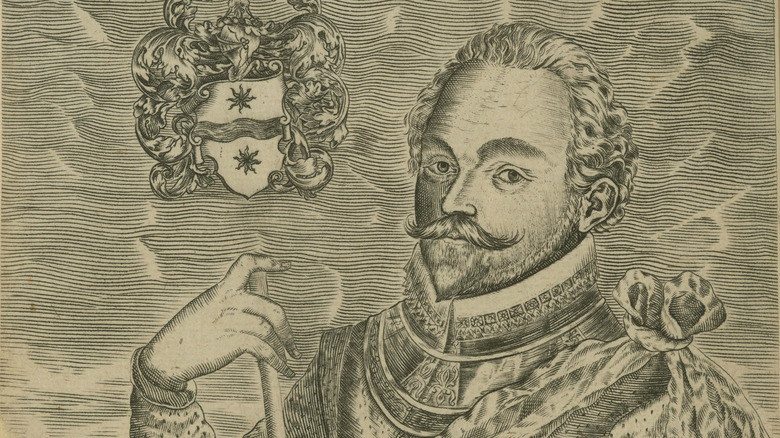Some Fans Think This Famous Explorer Could Be Behind The Curse Of Oak Island Mystery
Some might be surprised that a show like "The Curse of Oak Island" has had so many seasons. But then, when you're talking about a Nova Scotian island that has been the rumored resting place of everything from Marie Antoinette's jewels to long lost Shakespeare folios to even the Holy Grail itself, the intrigue is apparently endless. Hence the news that the History Channel has renewed "The Curse of Oak Island" for a tenth season, which means another season of watching the brothers Lagina try to determine what is at the bottom of the island's famed Money Pit.
In fact, the mysteries on this island –- what could actually be buried there? –- seem to grow in intricacy as we understand more and more about the history of European colonization in North America. Not too long ago, common knowledge had it that Christopher Columbus was the first European to set foot on the "new" continent. Now it is widely accepted that the Vikings established settlements in what is now Newfoundland some 400 years prior (via BBC.com), breathing new life into the legends that the likes of the Knights Templar and Rosicrucians might have found their way there too.
The line between legitimate historical speculation and conspiracy theory is a fine one, particularly when something like buried treasure is involved. Nevertheless, "The Curse of Oak Island" has invited some fascinating theories about the small island's potentially rich history.
Sir Francis Drake may be behind the mystery of Oak Island
In Season 5, Episode 7, "The Lot Thickens," Rick and Marty Lagina talk with historian Paul Speed, who argues that a scrap of leather found on the island – supposedly used in the bookbinding process – could be connected to sixteenth century British explorer Sir Francis Drake.
Drake is one of the more controversial figures in the Age of Exploration. Though most English-language histories refer to him politely as a "privateer," a more recognizable term for him would have been "pirate," which is to say nothing about his beginnings as a slave trader. Drake raided so many Spanish ships — in the name of the English crown, of course — that King Philip II of Spain put a price of 20,000 gold ducats on his head. That's a reward that would come to roughly $8 million in today's terms (via History.com). If, as Speed says, the treasure of Oak Island is the loot of Sir Francis Drake, it could be worth a considerable sum.
Speed went so far as to suggest that Drake himself may be buried on the island. It makes for a fascinating theory. Official history tells us that after Drake died of dysentery in 1596, he was buried at sea in a lead coffin off the coast of Panama. And yet, despite several attempts, divers have been unable to find the coffin (via Royal Museums Greenwich). This means that, in theory, the official history could be wrong, and Drake could be buried on Oak Island.

